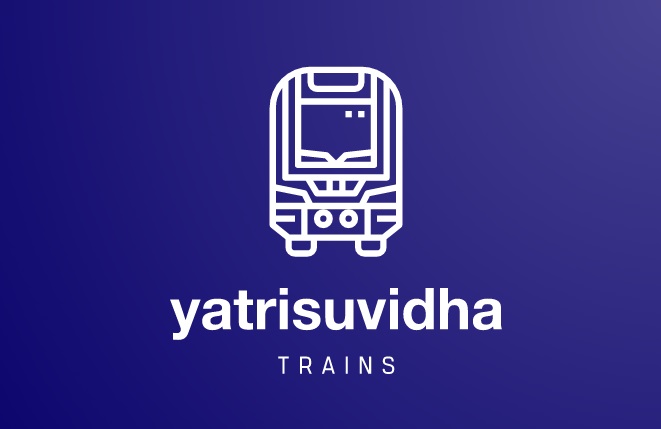
TQWL (Tatkal Waiting List) in Indian Railways: Confirmation Chances and Factors
In India, train travel is often the preferred mode of transportation for millions due to its affordability, coverage, and convenience. The Indian Railways operates an extensive network, handling a significant passenger load daily. One common feature of train travel in India is the “waiting list” system, especially for Tatkal tickets, which are last-minute tickets available for urgent travel. In this article, we’ll dive deep into TQWL (Tatkal Waiting List) tickets, exploring what they are, the factors that impact confirmation chances, and strategies to improve your odds of getting a confirmed seat.
- What is TQWL?
TQWL, or Tatkal Waiting List, is a specific category of waiting list for tickets booked under the Tatkal quota. The Tatkal quota was introduced by Indian Railways to facilitate passengers who need to make last-minute travel arrangements. This system allows passengers to book tickets a day before the travel date, with bookings usually opening at 10 AM for AC classes and at 11 AM for non-AC classes. Given the urgency associated with Tatkal tickets, they are often booked quickly, leading to waitlists.
Unlike the general waitlist (GNWL) or other categories, TQWL has unique characteristics:
It’s Exclusively for Tatkal Quota: Only passengers who book under the Tatkal quota can be placed on the TQWL.
It’s Lower Priority for Confirmation: TQWL tickets have less priority in the waitlist hierarchy compared to other waiting lists like GNWL or RLWL (Remote Location Waiting List).
Automatic Cancellation: If a TQWL ticket does not get confirmed by the time of chart preparation, it is automatically canceled, and the passenger receives a refund.
- How Does TQWL Differ from Other Waiting Lists?
To understand TQWL, it’s essential to compare it with other common waiting list types in Indian Railways.
- General Waiting List (GNWL):
Applies when a passenger boards from the train’s origin station or a nearby station.
GNWL has the highest priority in the confirmation queue, meaning it is likely to confirm first when seats become available.
- Remote Location Waiting List (RLWL):
RLWL is for passengers boarding from intermediate stations.
RLWL has lower priority than GNWL but higher than TQWL.
- Pooled Quota Waiting List (PQWL):
This is meant for passengers traveling short distances.
Like RLWL, PQWL has less priority compared to GNWL and is unlikely to confirm if the journey is long-distance.
- Tatkal Waiting List (TQWL):
TQWL is unique to Tatkal bookings and has the lowest priority for confirmation.
Because of its low priority, TQWL tickets are often less likely to get confirmed, especially on popular routes.
Each type of waitlist has a unique priority in terms of seat allocation. This priority directly impacts the chances of a waitlisted ticket getting confirmed.
- What Affects TQWL Confirmation Chances?
TQWL tickets have the lowest priority for confirmation, but certain factors can influence the odds of confirmation. Understanding these factors can help passengers make informed decisions when booking.
- Route Popularity and Train Frequency
High-demand routes, like those between metropolitan cities, are more challenging for TQWL confirmation.
However, on less popular routes, TQWL tickets stand a better chance of getting confirmed as there are fewer competing waitlists.
- Class of Travel
For higher classes like 1A or 2A, the likelihood of confirmation is slightly better because they usually have fewer passengers.
For sleeper (SL) and general classes, TQWL tickets are much harder to confirm due to higher demand and greater occupancy.
- Day and Season of Travel
During peak seasons (festivals, summer vacations, winter holidays), TQWL tickets have a lower chance of confirmation due to high passenger volume.
Travel on weekends also sees higher demand, reducing confirmation odds for TQWL.
- Position on the Waitlist
A TQWL position of 1-5 has a better chance of confirmation compared to a higher number.
Typically, the first few waitlisted tickets stand the best chance as cancellations occur.
- Time of Booking
Booking as soon as the Tatkal window opens improves the chances of obtaining a lower TQWL number, enhancing confirmation odds.
Those booking Tatkal tickets after an hour of the opening window generally find themselves in higher TQWL positions with lower confirmation chances.
- Analyzing TQWL Probability of Confirmation: How Likely is Confirmation?
Historically, TQWL tickets have the lowest confirmation rates across the Indian Railways system. Based on several factors, the probability of TQWL tickets confirming can be roughly estimated. Let’s break it down:
- High-Probability Factors:
If a TQWL ticket is within the first 5 on the waitlist, there is a moderate chance it may confirm.
If traveling during a non-peak season on a route with less competition, the likelihood of TQWL confirmation increases.
- Low-Probability Factors:
TQWL tickets beyond position 5 have low chances of confirmation, especially on busy routes.
Tickets booked on popular routes during peak seasons generally have slim chances of confirmation.
- Strategies to Improve TQWL Confirmation Chances
Given the low confirmation probability, passengers can use various strategies to maximize their chances of securing a confirmed seat.
- Booking Early:
Book Tatkal tickets the moment the window opens to minimize your TQWL position.
Using multiple devices or platforms simultaneously can speed up the booking process.
- Opting for Flexi Fare Trains:
Flexi fare trains, though pricier, may have more availability under the Tatkal quota, increasing the chances of confirmation.
- Choosing Alternate Routes or Trains:
Instead of opting for a popular train on a busy route, consider alternate trains with lower demand.
Sometimes, booking a longer route that passes through the destination can increase seat availability.
- Monitoring the Status Regularly:
Track the status of your TQWL ticket. If there’s a significant jump in waitlist positions, the chances of confirmation may be higher.
Mobile apps like NTES or IRCTC’s official app can help with real-time updates on your ticket’s position.
- Booking Under General Quota (if possible):
For routes where Tatkal demand is extremely high, booking under the general quota well in advance is a more reliable option.
If Tatkal is essential, keeping an eye on general quota availability can sometimes reveal options for faster confirmation.
- Alternatives to TQWL: What to Do if Your TQWL Ticket is Unlikely to Confirm
If the chances of confirmation are minimal, passengers can consider other alternatives:
- Consider Premium Tatkal (PT) Quota:
Premium Tatkal is a higher-priced alternative to Tatkal and is available on selected trains. PT quota tickets have a higher probability of confirmation.
However, they are pricier, as PT tickets are dynamic fares that increase based on demand.
- Look for RAC (Reservation Against Cancellation) Availability:
RAC tickets guarantee a shared seat and often confirm more readily than TQWL.
If RAC status is available, it is generally a safer choice compared to TQWL.
- Opt for a Sleeper Bus:
On high-demand routes, luxury sleeper buses can provide a reliable alternative if train tickets are not available.
This option is especially useful on routes like Mumbai-Goa or Delhi-Jaipur, where bus services are efficient and timely.
- Frequently Asked Questions about TQWL
Q1: Can I board the train with a TQWL ticket?
No, passengers with TQWL tickets cannot board the train if their ticket is not confirmed. TQWL tickets are automatically canceled if they don’t confirm by chart preparation.
Q2: Do I get a refund if my TQWL ticket doesn’t confirm?
Yes, the amount paid for the TQWL ticket is refunded automatically if it remains unconfirmed.
Q3: Is there any chance of a last-minute confirmation for TQWL tickets?
Although unlikely, last-minute confirmations can occur due to cancellations. Passengers should check their ticket status close to departure time.
TQWL, or Tatkal Waiting List, remains a challenging option for travelers, especially during high-demand periods. With low priority in the waitlist queue, these tickets are often difficult to confirm unless specific favorable conditions are met. However, understanding the factors that influence TQWL confirmation chances can help travelers make better decisions. By booking early, choosing alternative routes or quotas, and exploring other options, passengers can improve their likelihood of a confirmed journey or find a viable travel alternative.
While the TQWL system may seem restrictive, it’s part of the Indian Railways’ broader strategy to manage an enormous passenger base while still offering last-minute options. Knowing the odds and using strategic booking methods can make all the difference in securing that elusive confirmed seat.

Leave a Reply